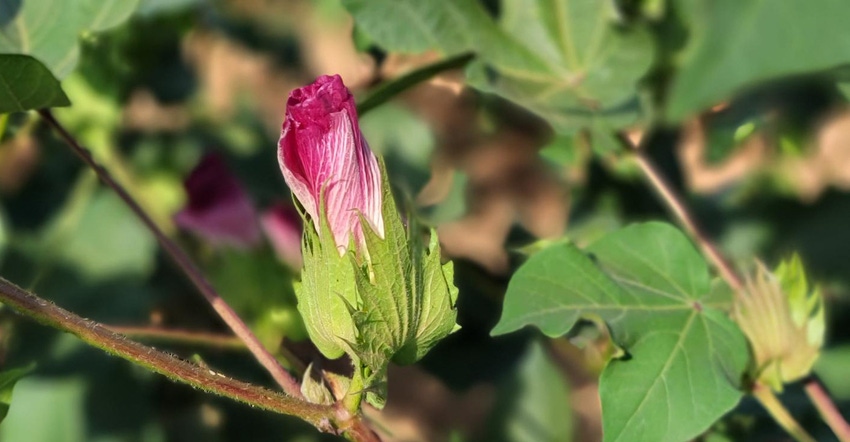
Late summer and early fall, before cotton and peanut plants begin to die down, farmers should add nematode damage to their scouting regimens.
“Check the low areas in your field,” says Texas AgriLife Extension pathologist Cecilia Monclova-Santana, Lubbock. “Watch for patches of stunted plants,” she says. “Also, pull some plants and check for galling. That will help identify root knot nematodes.”
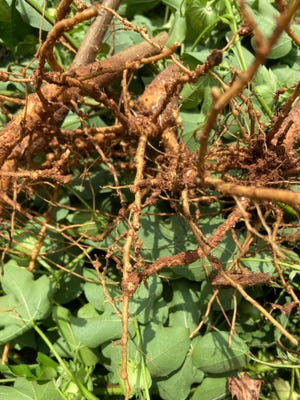 Galls on cotton roots, look like small bumps mostly in the secondary roots. (Photos by Cecilia Monclova-Santana)
Galls on cotton roots, look like small bumps mostly in the secondary roots. (Photos by Cecilia Monclova-Santana)
Uneven growth patterns, non-uniform height —some tall and some short — indicate potential nematode presence, Monclova-Santana says. “If you see galls, that’s probably root knot."
Reniform nematodes, sometimes seen on the Texas Southern Plains, are more complicated to identify, she adds. Evaluating varieties could be a clue. Stunting and wilting on root knot resistant varieties might indicate reniform. “Usually, farmers know if they have reniform.” She says reniform is less common in the Southern High Plains but has been identified in some counties.
"A variety with a resistance description that’s not behaving up to its potential and showing stunting or wilting, could be infected with reniform,” Monclova-Santana says. “We can do an analysis at the lab here in Lubbock to identify it.”

Producers need to know if they have nematode infestations, she adds. “On the Southern High Plains, nematode is the No. 1 pathogen problem.”
Nematode losses in cotton may be severe. “Yield loss to nematodes ranges from around 10% to as high as 30%,” Monclova-Santana says. “A 30% loss would be on highly infested fields planted in a susceptible variety.”
Water issues may exacerbate nematode losses. “In West Texas, nematode infestations may co-exist with water stress. Nematode infected plants need more water and lose more water.”
Some farmers may make up for some of the loss with good irrigation, which is not always possible, Monclova-Santana says. “But cotton is resilient; it can bounce back from environmental or pathogen damage. It will compensate if it has enough water. That’s just not possible with many farmers.”
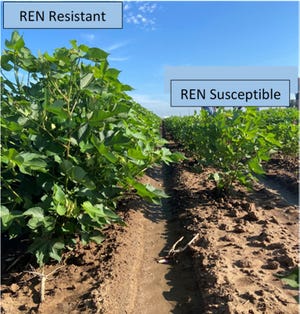 Variety response to reniform nematode pressure, resistant vs susceptible, height differences.
Variety response to reniform nematode pressure, resistant vs susceptible, height differences.
She says root knot nematode infects all the sandy regions in the southern High Plains (approximately 1 million cotton acres), along with the reniform nematode in localized areas.
“We don’t see as much root knot damage on peanuts in the Southern High Plains,” she says. “And the root knot species that affects peanuts is different from the one that damages cotton. That makes peanuts a good rotation for cotton.”
Monclova-Santana says two major problems come from nematode infestations in cotton. “We see damage solely from the presence of nematodes — stunting, wilting and lower yields. But we also see secondary diseases. Nematode infections exacerbate Verticillium wilt and Fusarium wilt and make cotton more susceptible to Rhizoctonia.”

She recommends that while farmers are scouting for disease pressure, they also look for nematode infection symptoms. “At this point, producers can do nothing to mitigate nematode damage,” she says. “But if they detect nematode presence now, they can make better decisions next year.
“We’re not seeing much pressure on peanuts,” she says, “but peanut producers might look for nematode damage while they scout for pod rot and other diseases.”
Rotation
Rotation will be a key option.
“Rotate cotton to peanuts if that’s possible,” Monclova-Santana says. “If they identify reniform nematodes, producers may rotate with sorghum or corn.”
She says some producers plant wheat or rye to lower root knot nematode populations. Both of those are root knot hosts, however. “Rye might not be as much of a host, but we don’t see much decrease in nematode populations. On trials here, we determine that rye is a poor host, but still a host.”
She has tested hairy vetch and crimson clover cover crops to determine root knot nematode activity. “Both are susceptible, so that’s not a recommendation.”
On highly infected cotton fields, “our recommendation is rotation and to plant varieties that are resistant or tolerant. Probably the addition of an in-furrow nematicide is needed to control populations.” Dr. Terry Wheeler (AgriLife research pathologist) and I post variety trial results, including crop performance through fiber quality every year.”
Monclova-Santana says cotton farmers have several options for nematode resistant varieties. “All the big companies have resistant varieties available for root knot nematode. It’s good to know that farmers have multiple options with varieties they are familiar with. Some seed companies have varieties resistant to reniform nematode. Be aware that a variety with resistance to root knot might not be resistant to reniform; however, all the current (2021) commercial varieties resistant to reniform nematode are also resistant to root-knot nematodes.”
Trials
She also recommends that growers look at TAMU variety trials every year. “See how specific varieties are behaving in these trials and look at their production potential.
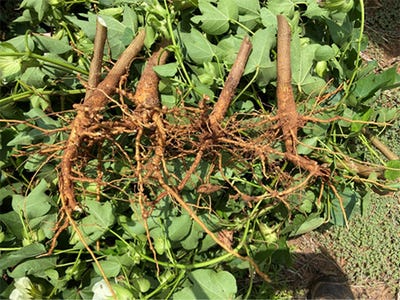
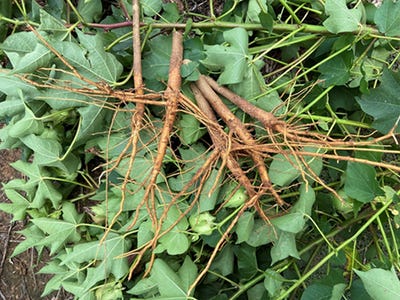
“Also, producers need to know if they have nematodes along with secondary diseases — root knot and fusarium or root knot and verticillium, among other possibilities. Look for resistance to that secondary disease. It's important for a producer to know what disease he has in the field and then choose a variety that addresses both issues.”
She adds that she and Wheeler conduct disease trials every year and post the results on the website.
Growers with identified nematode infections may also consider nematicides.
“Some premium seed treatments include a nematicide. Also available is an in-furrow application of Velum. Aldicarb is another option in the furrow at planting, or oxamyl applied over the top of plants. We are also testing other products.”
Scout now
For now, she recommends producers determine if they have nematode populations, while plants are still growing, and nematodes remain active. “August through September is the perfect time to take samples,” she says. “Soil moisture is important; you need moisture after rain or after irrigation to get a good sample. Soil doesn’t have to be damp but should have some moisture.”
Samples should be pulled from the root area. “Submit samples to the lab in Lubbock. Dr. Wheeler and I will process and let you know.”
She says identifying nematodes now will not help mitigate problems this year, but an analysis of nematode samples will provide information to help with planning for next year.
About the Author(s)
You May Also Like






